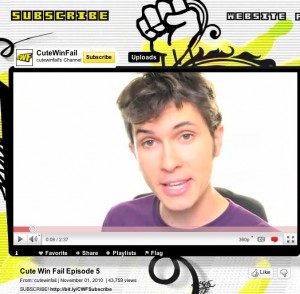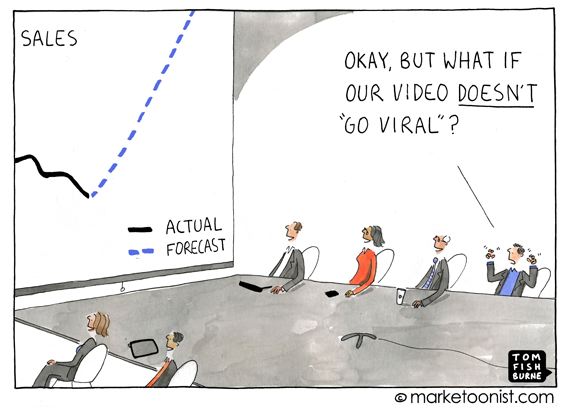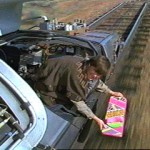In a very interesting model, the producer of America’s Funniest Videos is bringing an archive of 1970s-present user-generated content to YouTube. And, no, Bob Saget and Tom Bergeron are not hosting, VHS players are optional, and the AFV brand isn’t involved. Thank God.

Instead Vin Di Bona (who, trivia here, used some of my 1980s clips in the trailers promoting AFV) is teaming with Phil DeFranco (Sxephil) and Toby Turner (Tobuscus) in what’s called CuteWinFail. Read about it on NewTeeVee if you actually want facts. The premise is that the audience decides if it’s cute, a “win” (victory) or “fail” (embarrassment).
 Toby is one of few people who can pull off hosting this format with his manic delivery, clever writing and genuine nature. He celebrates the archaic clips without pandering to them… and avoids falling into the dangerous trap of Webjunk and Tosh 2.0, where the host snubs the content. Toby walks the fine line in a way that Phil probably couldn’t have done — simply because he couldn’t likely hide his contempt for the clips (but who among us can throw a stone?). Toby, on the contrary, mocks and celebrates the cheesy moments in what can only be called Tobuscumockercelebration.
Toby is one of few people who can pull off hosting this format with his manic delivery, clever writing and genuine nature. He celebrates the archaic clips without pandering to them… and avoids falling into the dangerous trap of Webjunk and Tosh 2.0, where the host snubs the content. Toby walks the fine line in a way that Phil probably couldn’t have done — simply because he couldn’t likely hide his contempt for the clips (but who among us can throw a stone?). Toby, on the contrary, mocks and celebrates the cheesy moments in what can only be called Tobuscumockercelebration.
I believe it’s one of the smartest collaborations between traditional media and YouTube, and far more likely to emulate the popularity of FailBlog than most production/network “fails” on YouTube. It’s also likely to get Phil and Toby on the big-boy radar since it has the credibility of AFV’s producer.
The biggest difference between “Cute Win Fail” and Failblog, of course, is that the clips are owned by the channel, so advertising is fair game. Poor FailBlog could be making several hundred thousand dollars (actually well more) if it was monetized, but it’s mostly “ripped” content. Di Bona’s production company (see NewTeeVee) owns loads of cheesy b-roll, and it would have been a horrible embarrassment to start uploading and monetizing it without Sxephil and Tobuscus vouching for it and putting it into YouTube context… and allowing it to be self aware of the “cheese” factor in a way that even the smooth Bergeron couldn’t have done.











 Toby is one of few people who can pull off hosting this format with his manic delivery, clever writing and genuine nature. He celebrates the archaic clips without pandering to them… and avoids falling into the dangerous trap of Webjunk and Tosh 2.0, where the host snubs the content. Toby walks the fine line in a way that Phil probably couldn’t have done — simply because he couldn’t likely hide his contempt for the clips (but who among us can throw a stone?). Toby, on the contrary, mocks and celebrates the cheesy moments in what can only be called Tobuscumockercelebration.
Toby is one of few people who can pull off hosting this format with his manic delivery, clever writing and genuine nature. He celebrates the archaic clips without pandering to them… and avoids falling into the dangerous trap of Webjunk and Tosh 2.0, where the host snubs the content. Toby walks the fine line in a way that Phil probably couldn’t have done — simply because he couldn’t likely hide his contempt for the clips (but who among us can throw a stone?). Toby, on the contrary, mocks and celebrates the cheesy moments in what can only be called Tobuscumockercelebration.